Recommended order
- Starting point
- Memories cards
- Team building
- Combat basics ⇐ you are here
- Protocores basics
Battle Controls
Despite being marketed as an otome game, LaDs has significant combat gameplay modes. All combat stages have a similar layout:
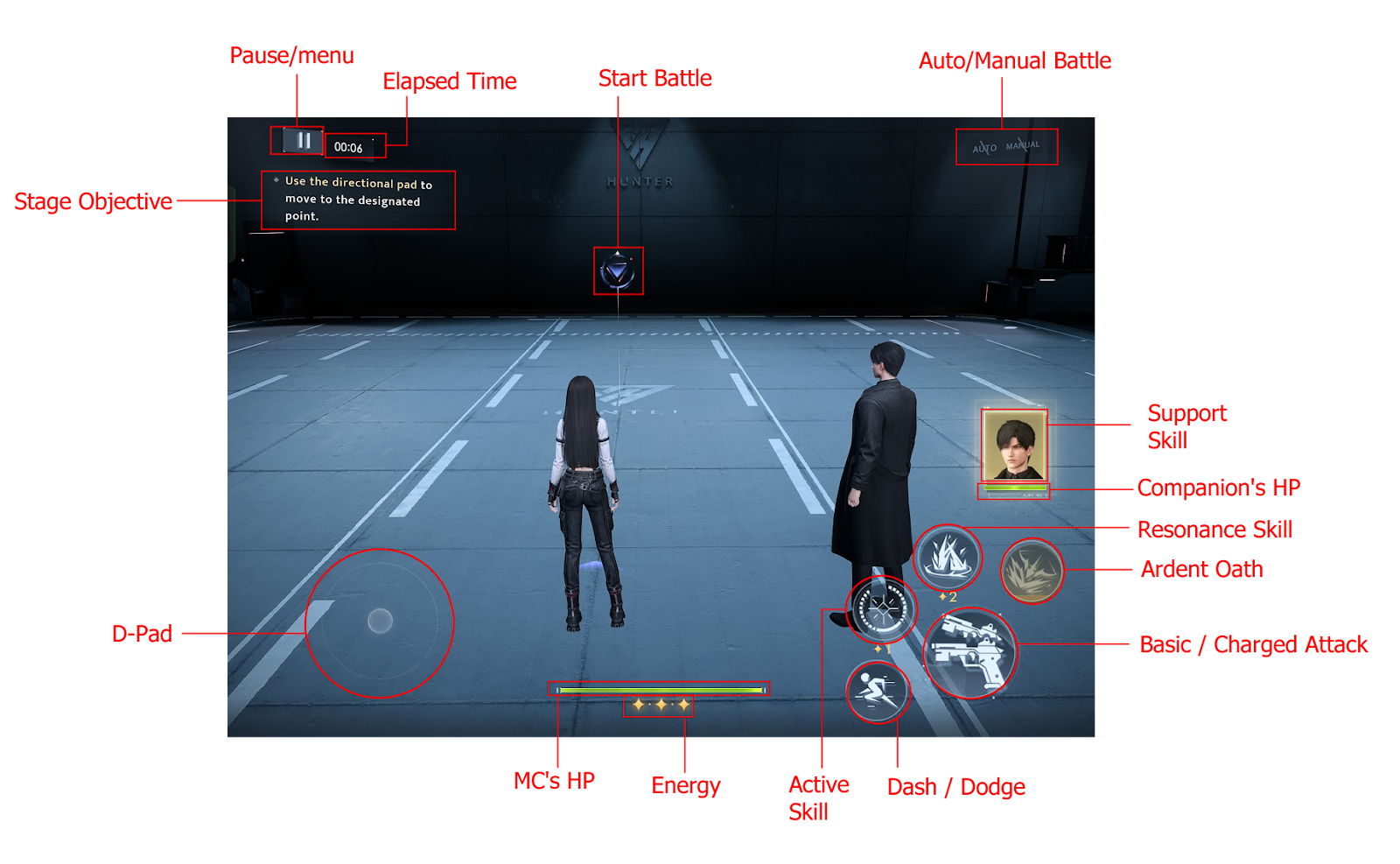
The top half of the screen is populated with less commonly used functions but still important to know for battle.
- Pause/Menu: If you need a break or need to restart the stage, tap this button to open up a box with additional functions, including a summary of the stage goals, a summary of your weapons and companion skills, audio settings, and battle settings. In battle settings, you can enable target lock functionality as well as allow for skipping skill animations.
- Elapsed Time: Shows how much time is left to complete the stage. Note that in the majority of battles, the timer starts before enemies have spawned. You have to run to the Start Battle icon to actually start the battle.
- Stage Objective: Summarizes the goals for this battle. Here you will see objectives like how many waves are in the battle, how many enemies are in the wave, or how quickly you need to complete the battles to obtain stars, etc.
- Auto/Manual Battle: Where available, you can toggle auto or manual battle. Tutorial battles are always manual. Toggling auto will allow the game algorithm to battle for you. In most cases, the algorithm is poorly written and requires significantly more stats to beat the level. Auto combat is good for low level battles, or players with whale builds. We recommend manual combat to get around the poorly written algorithms.
The bottom half of the screen is where the majority of the active combat controls reside.
- MC’s HP: When this drops to 0, the battle is forfeit.
- Companion’s HP: Once this drops to 0, the battle is forfeit.
- Energy: Charges over time and allows you to use active and resonance skills
- D-Pad: short for “directional pad”, this is where you control the movements of MC

- Dash/Dodge: used to avoid damage or to move quickly in the direction indicated by the D-Pad. If this button is tapped while no direction is selected on the D-Pad, MC will dodge backwards.
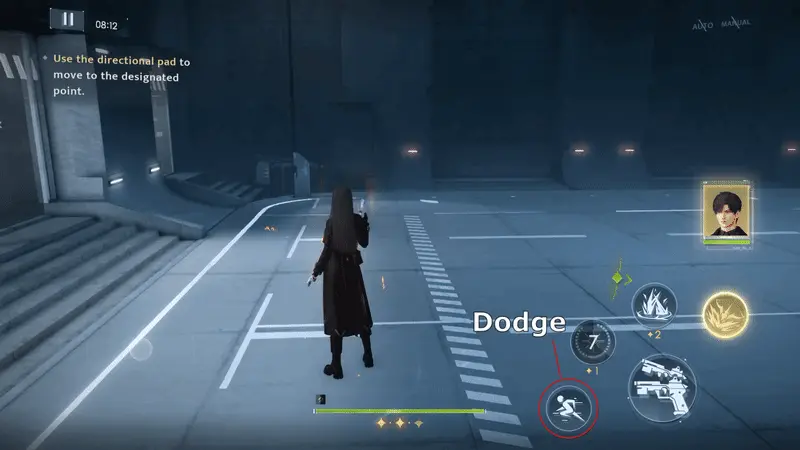
- Direct Dodge: Tap to make MC run in the direction selected by the D-Pad.
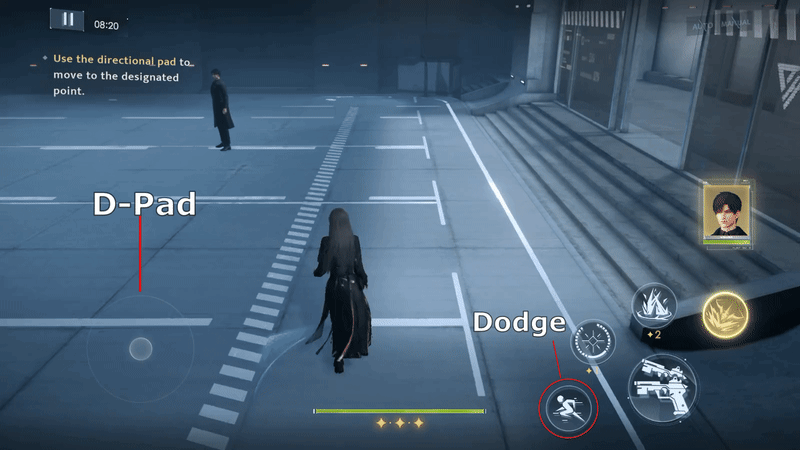
- Perfect Dodge: If this button is tapped at the exact time that an enemy is about to attack MC, this is called a “Perfect Dodge”. A perfect dodge will trigger an empowered support skill (see below).
- Basic Attack (BA): Tapping the button will make MC use her basic attack. Tapping repeatedly will execute a chain of basic attacks. Usually, a chain of attacks is referred to as 4BA or 2BA, etc. The number before BA indicates how many attacks in the chain you need to do. 2BA is also sometimes written as “ba ba dash/dodge”
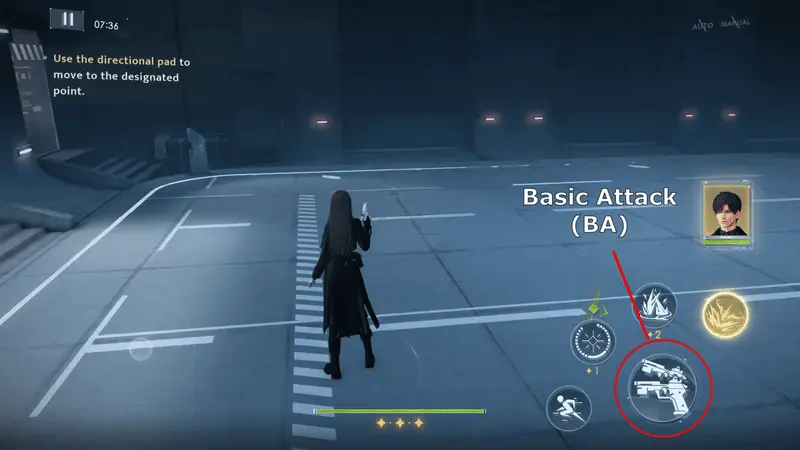

- Cancel animation: The dodge button is often used to cancel long skill animations or to interrupt the basic attack chain to save time and deal more damage.

- Charged Attack (CA): Holding the button will make MC use a charged attack.

- Active Skill: MC’s weapon has a special attack that deals more damage. The number under the button indicates how many energy charges are required to execute the attack. In most cases it is 1 energy.
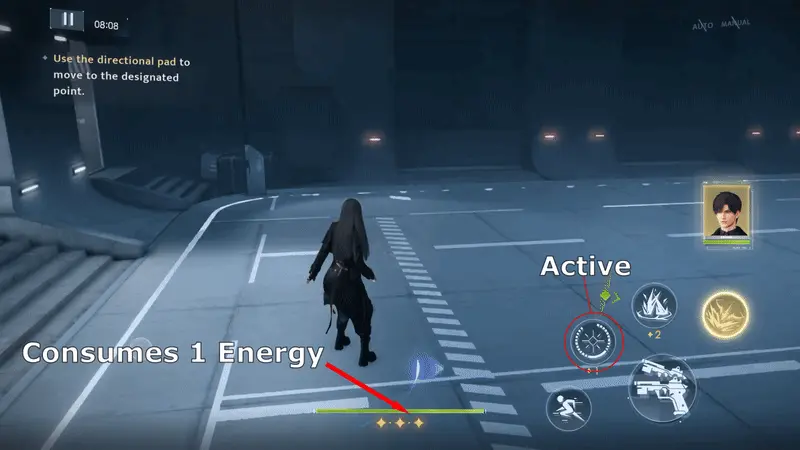
- Resonance Skill (Reso): Partner up with your companion to unleash a joint attack that can break the enemies’ protocore shield(s). The number under the button indicates how many energy charges are required to execute the attack. Usually it is 2 energy.
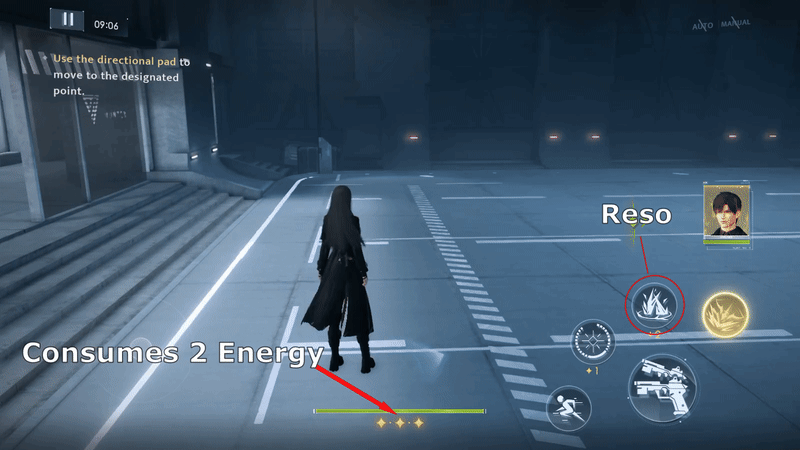
- Ardent Oath: Can be considered an ultimate (ult) attack. MC and her companion will work together to unleash a heavier attack. It comes with an animation that does not use up battle time and can be skipped if allowed in the battle settings.
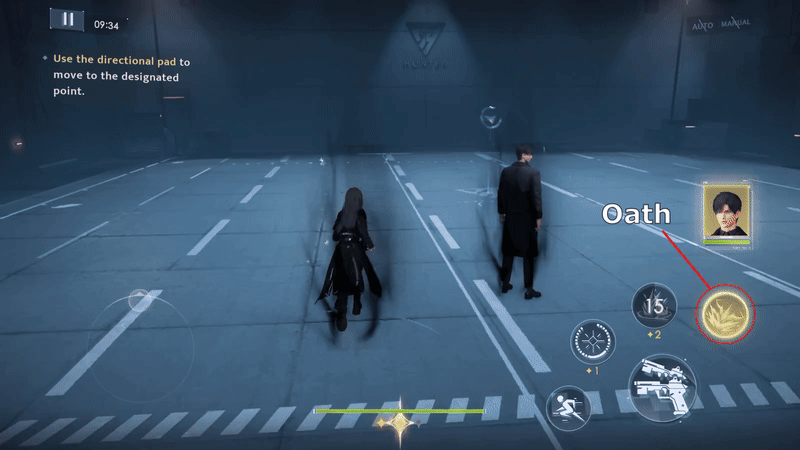
- Support Skill: Command your companion to unleash his special attack.
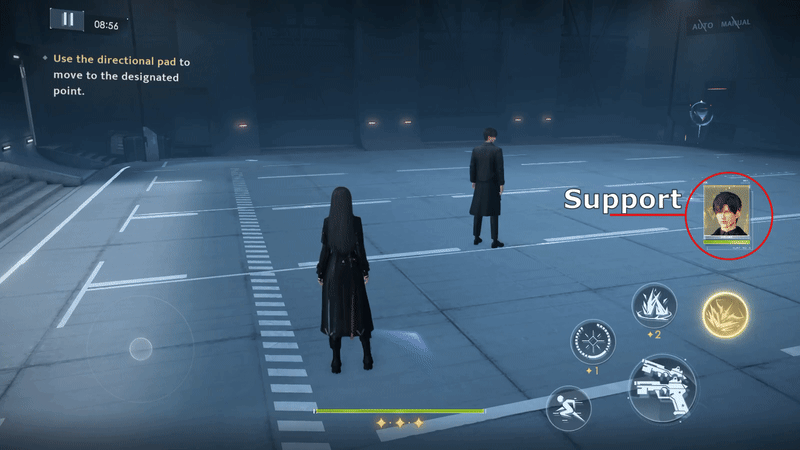
- Empowered Support Skill: After triggering a perfect dodge, the support skill CD will end immediately and the button will flash for a short period of time. When used in its flashing state, the support skill is empowered with additional power, specific to the companion. After using an empowered skill, it enters cooldown and cannot be triggered for a short period. Note that if the support skill is not used before the flashing stops, this cooldown does not start and you can immediately trigger another empowered support. In some cases, this functionality can be used to continuously shorten the CD of the support skill.
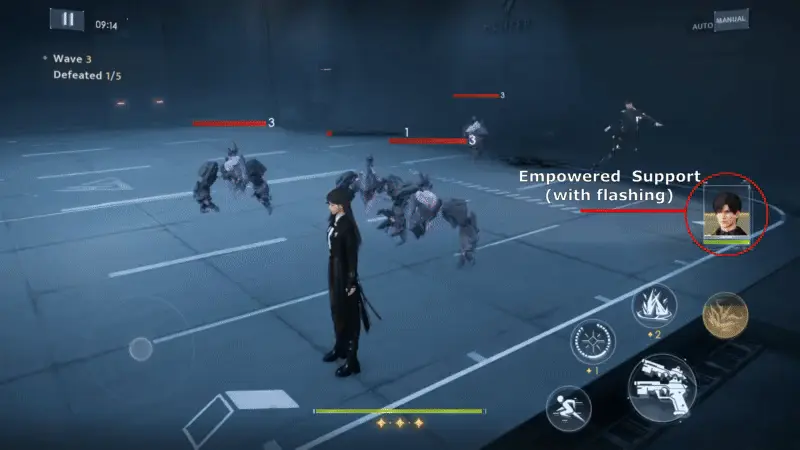
Normal vs Critical vs Weakened Damage
There are three types of damage that can be inflicted on enemies: normal, critical and weakened.
Companion kit descriptions in the game describe damage in terms of multiples of a team’s stats (ex. Hunter guns’ first basic attack deals 44 + 59% ATK DMG). Note that while these equations exist, the game still has an RNG range mechanic on ALL types of damage.
Normal: Normal damage is determined by taking this basic formula and applying the team stats to it. Normal damage numbers appear as White values in battle.
Critical: A critical hit is when a normal attack is enhanced. How often this can happen is determined by the team’s Crit Rate and the amount of enhancement is determined by the team’s Crit DMG. For example, if the team has 57% crit rate, then approximately 57% of all hits on the enemy are critical hits. If this team has 157% crit dmg, then when a crit hit is dealt, it will be +57% higher than the normal value (if normal damage is 1000, then the crit hit will be 1570). Critical damage numbers appear as Yellow values in battle.
Weakened: When an enemy is weakened, they cannot take normal or critical damage. All damage is converted into weakened damage, and is calculated based on the team’s damage boost to weakened stat (d2w). Weakened damage numbers appear as Blue/Purple values in battle.
Oath doesn't crit
Unless otherwise stated, oath damage cannot crit. It is always normal damage or weakened damage. For this reason, it is usually recommended to use oath in weakness to deal more damage.
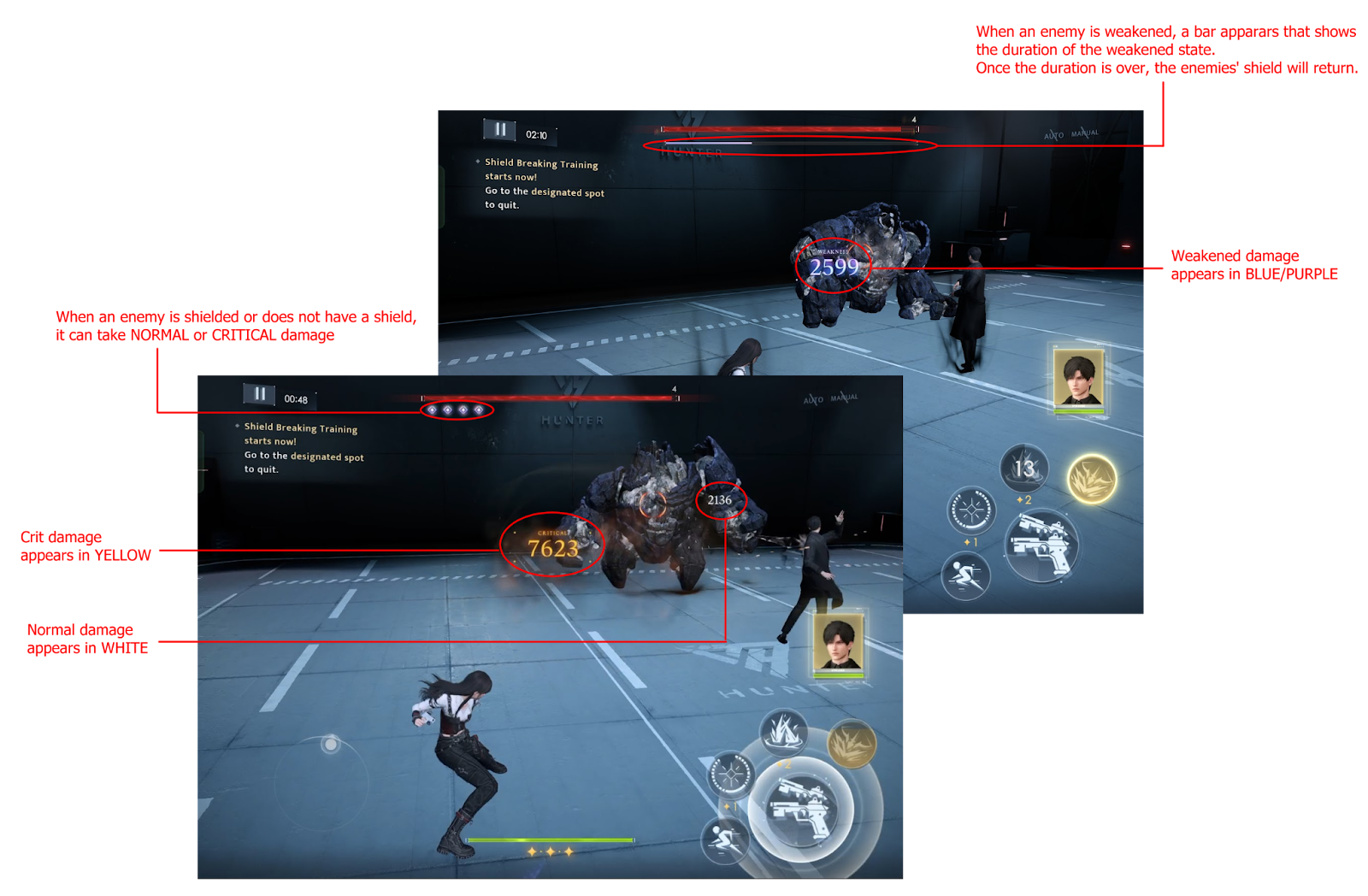
Why does this matter?
When assembling teams, it is important to know what sort of enemies are in the stage - this will determine how often the enemy is in a state when it will take normal & critical damage, vs a state when it will take weakened damage.
Next to read Protocores basics ⇒
v1.0 by @jayci_3280 @kemrian. Proofreading by @anan1n @.kitty143